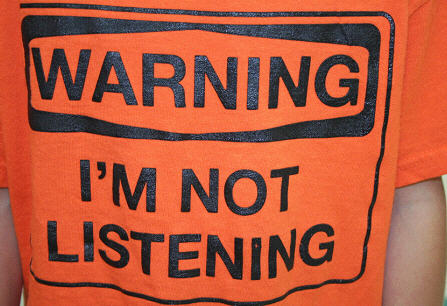I’ve been suffering a bit of blogger’s block lately – finding a motivational topic difficult to come by and even harder, something everyone’s not already talking about. So I reached out to my Twitter community and asked for ideas. I received some interesting feedback but one that caught me by surprise was from @Britrock, who suggested I write “about topics that are beaten to death and why the subject is so popular?”
So here I am and the subject is of course, social media. It’s absolutely beaten to death – yet unsolved – and it’s so popular because no one can quite agree on its definition, its impact, its value, its future or even its present. Not everyone is bought into the “concept” and even when businesses are, they are unsure who to trust – who really “gets it” from a business value perspective and understands that it’s more strategic than creating a Facebook fan page and some cool videos?
We do know that it’s currently the hot buzzword in business. Oh, and it’s supposedly killing off entire industries such as PR, advertising and traditional media.
Social media is such a broad term, subject to the individual definition of everyone who mentions it. Some people think it means digital production, others think it means blogger relations and currently, Wikipedia defines it as “online content created by people using highly accessible and scalable publishing technologies.”
Businesses are trying to define its value, executives/celebrities/political figures are trying to understand how to use it, and “experts” galore are casting the FUD factor all over in hopes of capitalizing on the currently-hot trend. It’s talked about so much but in the end, I think it’s simple.
Social media is talking with – not at – those who matter to you, your brand, your business. It’s such a simple concept but it’s difficult for businesses to embrace because we’ve spent so many years just pushing messages out one way. Brands didn’t necessarily want to listen – they just wanted to dictate thought and influence opinions. Ad agencies would create sleek – and sometimes stupid – ads that people would mostly chat about the day after each year’s Super Bowl. If brands got lucky they’d hit a word-of-mouth winner like “Where’s the Beef” or “Aflac.” PR teams wrote press releases full of fluffy words that real people would never say, and no one really cared as long as it grabbed some attention and resulted in media coverage.
But now, things are different. With “social media,” consumers can not only post, dissect and analyze your words, they can create their own commercials about your product. They can write full blog posts about your press release and how silly it sounds and encourage others to create their own “fluffy words list” underneath it. They can create and promote “I hate your product” fan pages on Facebook and in just seconds, tell 25,000 people with 140 words how frustrated they are.

Or, how happy they are.
And here’s the thing – because they’re not actually trying to sell anything, they’re probably going to get more people to listen to them than a big brand standing on its own soap box. (Hence the illusion that PR and ad industries will suffer – rather, they will evolve – but that’s another blog post.) So what can you as a brand or a business do?
This brings me back to my definition of social media – talking with and not at. Clients very often come to us when something negative is said about them in a blog or on a social site like Twitter. Of course we analyze each instance but very often we encourage clients to engage with the naysayer – and this is a very difficult thing for businesses to get comfortable with. They don’t want to stir the pot or seem disingenuous. But when you have an issue with someone in your life, don’t you address the situation? Communicate? Discuss? That’s what social media is allowing us businesses to do in a way never before possible. You can fight or ignore it, or you can embrace and benefit from it.
Social media allows you to communicate directly with your customers and prospects. It gives you a platform to spark discussions that showcase your thought leadership or tell a customer story in a more visual and interactive way than ever before. It gives you a chance to share content among a community that you can see is relevant based on the discussions already taking place.
No, you can’t control it – but you can participate in, and positively influence, discussions. And if having happy customers tell others about you is valuable to you, (or showing prospects that you care about their opinion, or fixing a problem someone is having with your product, or lowering attrition, or showcasing your thought leadership, or winning a new client because they see so many other influencers engaging with you, etc.) then there’s your answer to social media ROI.

 Listening is important –
Listening is important –  Huh? With that mentality, no wonder marketing is often the first line item when companies are facing budget cuts.
Huh? With that mentality, no wonder marketing is often the first line item when companies are facing budget cuts.



